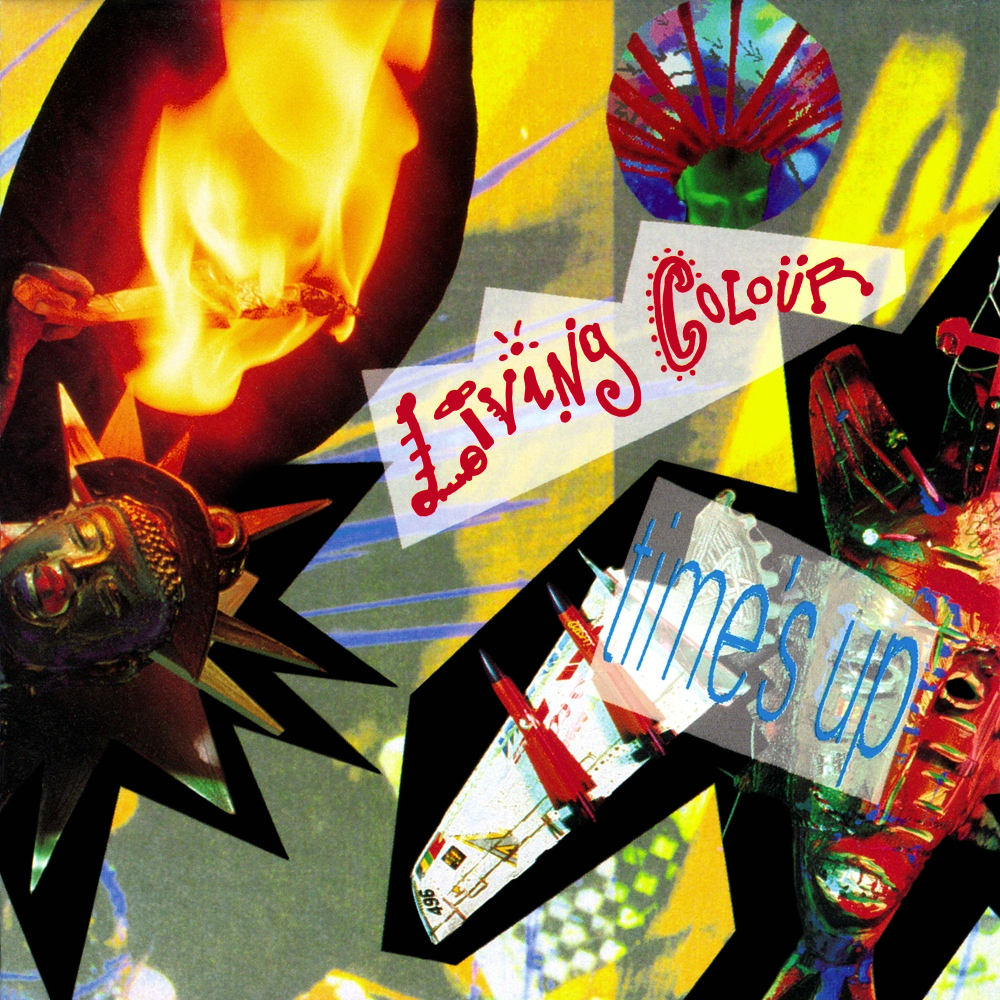 “Living Colour’s Time’s Up 30 Year Anniversary”
“Living Colour’s Time’s Up 30 Year Anniversary”
A recent post on Living Colour’s FB fan page has inspired me to write about this iconic band, and what they mean to me on a personal level. My mind has a difficult time comprehending thirty years have flown by since Living Colour released their sophomore gem “Time’s Up” back in August of 1990. “Type” was getting some heavy rotation on MTV and on college radio, back when indie stations were ultra hip and willing to take chances spinning music that was way ahead of its time. Although the album never reached multiplatinum status it achieved gold, which is no easy feat. You have to understand, these talented musicians absolutely changed my life at a pivotal point in my then fledgling musical path. The bombastic rage and power of the band’s single “Cult Of Personality” influenced this sixteen year old version of myself to go down to Record World and purchase Vivid on cassette, yes ladies and germs remember that prehistoric format? My bandmates at the time would gather down in our parent’s basements making feeble attempts at transcribing the entire Living Colour catalogue. We even opted performing “Middle Man” & “New Jack Theme” live at a few Battle of the Bands competitions somewhere in upstate New York and Connecticut, we lost both. Living Colour’s music isn’t something you just jump into expecting quick comprehensive results, you spend hours upon hours figuring out the heavily syncopated rhythms, beats, chord structures and soulful vocals buried beneath meaningful lyrics that still resonate with us today, especially under this national and political climate of unrest.
I have seen the band multiple times live, and always leave a show feeling invigorated and ready to get back “into the shed” honing my skills on the bass guitar, which will never end really, so thank you Doug & Muzz. Our musical journeys are (at least in my opinion) about continuing to keep alive that childlike fascination with listening to our favorite records and grabbing some sort of knowledge from the listening experience that we can bring back into the creative process, or even bring back into our “day to day” lives. Music transcends race, gender and political stance, but it does serve as a platform for transmitting a strong message to the masses, and that is exactly what Times’ Up does and represents thirty years later.
Read the words to songs such as “Fight The Fight” and “Pride”, they speak a message that needs to be heard and communicated so the next generation can learn by example of how to be kind, accepting and empathetic toward their fellow human being. It starts with us providing a template of peace and love before progress can be made, fingers crossed we can learn from our mistakes as a country and take a step forward instead of three steps back. From the deepest regions of my inner core I thank you Doug, Corey, Vernon, Will & Muzz for the body of work you’ve created, and for being stand up class act people always doing things on your own terms. You are and always will be a true inspiration to me musically and personally!
With great admiration and love,
Joe Burcaw







